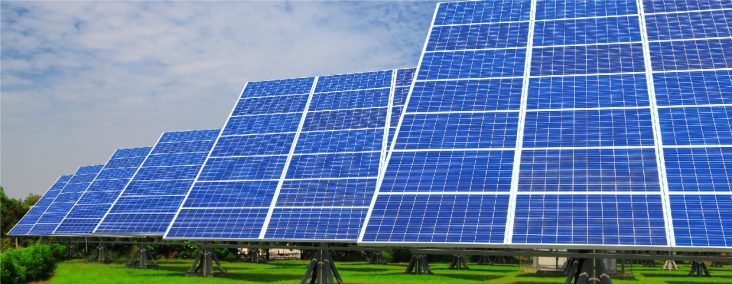EIA forecasts utility-scale renewable electric generation to grow 9% in 2016
by February 4, 2016 11:31 am 261 views

The U.S. Energy Information Administration is forecasting that electricity generated from utility-scale renewable facilities is expected to grow by 9% in 2016, based on projections in the latest federal research group’s short-term energy outlook. Arkansas facilities will be part of that growth.
Those projections come as utility companies and other power producers in Arkansas and other states are increasingly adding renewable energy sources to their electric generation portfolios. According to EIA, much of this year’s growth comes from new installations of wind and solar plants and increases in hydroelectric generation after a relatively dry 2015.
In 2016, electricity from utility-scale renewable sources is expected to account for 14% of the total electricity generated in the United States, with wind and solar contributing 5.2% and 0.8%, respectively. The EIA report follows an industry report in October by the Natural Resources Defenses Council that said America’s reliance on wind, solar, and other renewable energy sources has reached historic levels and is poised to make even greater gains in the near future.
That report found that energy sector in the U.S. emitted less dangerous carbon pollution last year than in 1996, with a full 10% reduction over the past decade. Meanwhile, coal and electricity consumption are down nationwide, while oil use today is lower than in the early 1970s, mainly due to the low cost of natural gas and a slew of federal clean air mandates by the federal Environmental Protection Agency, experts say.
In December, EIA data note that recently announced utility-scale solar power developments have finally put the Natural State on the map for sun-fueled electric generation, but Arkansas remains well behind the rest of the U.S. in the number of small-scale projects.
ARKANSAS WIND, SOLAR PROJECTS IN THE ENERGY MIX
Arkansas’ first commercial-sized solar energy facility came online in September when defense contractor Aerojet Rocketdyne and Arkansas Electric Cooperative Corp. dedicated the $25 million, 12-megawatt solar energy facility at the Highland Industrial Park in East Camden.
Around the same time, the PSC gave the okay for Entergy Arkansas Inc. (EAI) to move forward with an 81-megawatt photovoltaic solar energy generating facility in Arkansas County that is expected to connect to Arkansas’ energy grid by mid-2019. The so-called “Stuttgart Solar” project will consist of an array of stationary solar panels covering nearly 500 acres and could generate enough clean energy to power about 13,000 homes.
Today’s Power Inc. also announced plans in September to provide a one-megawatt AC solar array for Ozarks Electric Cooperative of Fayetteville. The Springdale-based system, which is scheduled for completion in the second quarter of 2016, will involve approximately 4,080 panels and encompass approximately 3.99 acres on a six-acre site.
Several wind-powered projects in Arkansas have also come into play in the past five years, including the controversial $2.4 billion privately-financed Clean Line Energy Partners electric transmission venture that is expected to deliver up to 3,500 megawatts (MW) of wind power from the Oklahoma Panhandle region to communities in Arkansas, Tennessee and other states in the Mid-South and Southeast.
Since 2012, the Arkansas Electric Cooperative Corp. also has announced three long-term purchase agreements add wind power to its energy mix, although production will take place at wind farms in Kansas and Oklahoma.
The EIA said increases in renewable capacity and generation are influenced by federal, state, and local policies. Surprisingly, the Department of Energy research group said the extension of federal tax credits as part of the Consolidated Appropriations Act passed at the end of 2015 is expected to have little effect on renewable capacity additions in 2016, mainly because most utility-scale plants that will enter service in 2016 are already being developed, including several wind and solar projects.
EIA’s Electric Power Monthly, based on data reported on EIA’s Annual Electric Generator Report (EIA-860) about planned capacity additions, shows that wind and solar plants make up two-thirds of all capacity additions planned for 2016. Changes in electricity generation from other renewable fuels in 2016 are expected to be flat (in the case of biomass) or relatively modest (4% increase in geothermal).
Electricity generation from hydropower facilities is expected to increase 5% in 2016 based on expectations of high precipitation during El Niño, with water levels recovering from the relatively dry years in recent history.
